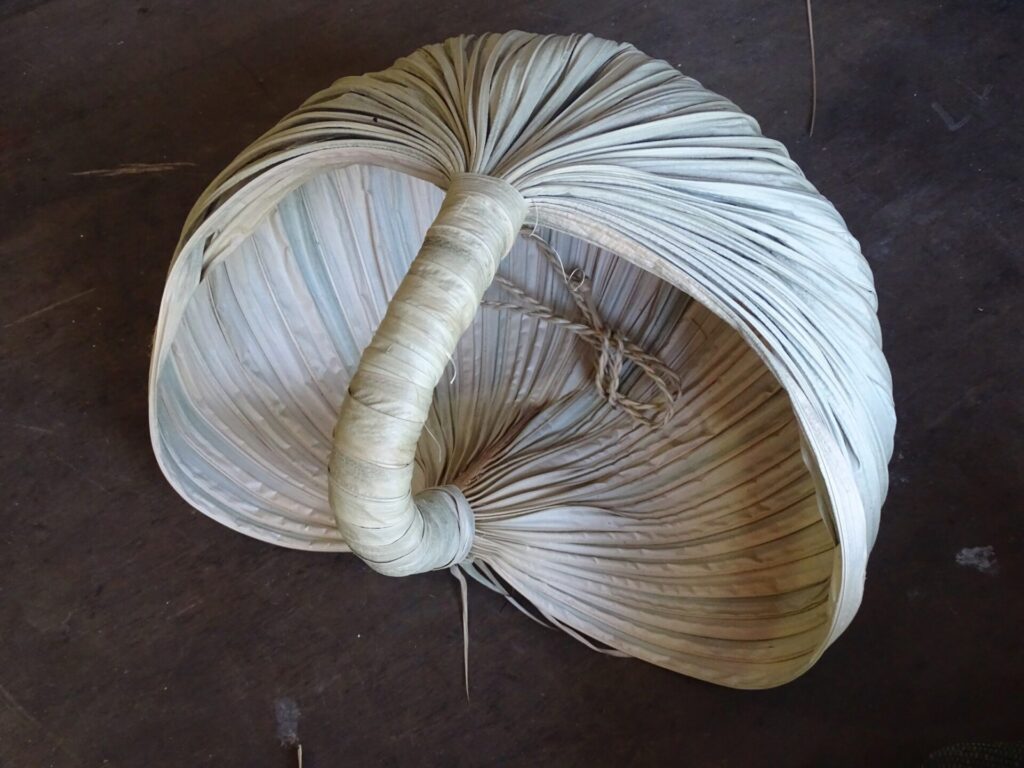Kuba (Chinese Fan Tree)

It has become harder in city areas like Naha, but if you visit a rural area, there is a good way to find a house of a family of pedigree or with tradition.
When visiting such an area, you may think the house should have an imposing gate or a beautiful red-tiled roof, but that’s not always the case. You cannot tell whether it’s a prestigious family residence just by looking at the front. What should you do? You should go around and check the back side. You won’t find a grand gate, nor some sort of sign. But if you see a Chinese fan palm growing in the backyard, the house belongs to a prestigious family. It’s not always the case, but most of the time it is.
The Chinese fan palm is called kuba in Okinawa. It is a tall, evergreen subtropic species of palm tree. A book of plants tells me that its habitats are in the Ryukyu Islands, Taiwan and the southern part of China. As I mentioned, it can be found in the garden of a prestigious family residence and in sacred sites called utaki. Although you can easily find kuba in the wild, growing kuba in the garden gives the house a sense of nobleness, or even sacredness like utaki.
On Kudaka Island, regarded as the island of the Okinawan gods, you can find countless kuba palms, which may make you think it is actually the island of kuba trees. The tree has sacred significance. Its leaves are important items of Izaihō, the sacred ritual held every twelve years on the island. Kuba is strongly linked to the history and sacred rites of Kudaka, the holiest island in Okinawa. In Okinawa, the ancient time is sometimes called Kubanufayū, the kuba-leaf era.
On the other hand, in everyday life, kuba can refer to a fan or a hat made of kuba leaves.
A kuba fan is really, really amazing. It reminds me of the scent of Okinawan elders, and it may sound like an exaggeration, but when an Okinawan grandma uses it, the wind brings people joy. To make the fan, the fresh kuba leaf is spread out and put under a tatami mat or something heavy. When it’s dry and flat, the jagged tips are cut and the kuba fan is complete. When a Obaa uses it, she doesn’t just send the wind towards herself, but she moves it in a wide stroke so that the wind comforts her grandchildren and guests. She knows the perfect pitch and movement, and she would just continue moving it without stopping. If you master that movement, you can be a great Okinawan grandma, maybe.
A kuba hat is as wonderful as a kuba fan.
Ikezawa Natsuki, who moved to Okinawa, said, “Farmers and fishers wear different types of kuba hats.” That makes perfect sense. Farmers wear wide hats to protect themselves from the hot sun, while fishers wear narrower and taller ones, so that they won’t be blown off by the wind. Even though they are both called kuba hats, their roles are different based on how they are used.
Kuba can create a holy atmosphere or protect common people from the harsh sun. They are a part of Okinawan daily life and are always loved by the locals. Their position is secured.

Photo: TARUMI Kengo








































































































































































































































